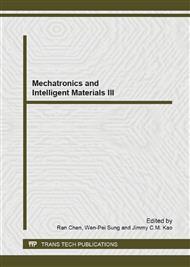p.658
p.663
p.667
p.674
p.678
p.682
p.687
p.691
p.695
Blind DOA Estimation Based on Single Acoustic Vector Hydrophone
Abstract:
In this paper a blind direction of arrival (DOA) estimation method based on single acoustic vector hydrophone is presented according to the characteristics of underwater acoustic waves. With no priori assumptions about the structure of steering vector, the vector hydrophone array manifold is estimated by the joint approximate diagonalization of eigen-matrices (JADE) algorithm. Simultaneously, acoustic waves are reconstructed by the separation matrix and signal vector. Finally, with the orthogonality of the components of particle velocity the DOA are estimated. Simulation experiment proves the effectiveness and correctness of this new method.
Info:
Periodical:
Pages:
678-681
Citation:
Online since:
June 2013
Authors:
Price:
Сopyright:
© 2013 Trans Tech Publications Ltd. All Rights Reserved
Share:
Citation:


